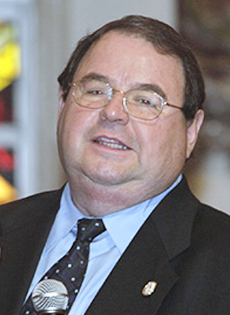
History of the eucharistic celebration XIV
The Second Vatican Ecumenical Council
Monday, November 30, 2020
*Rogelio Zelada
All the journalists who have arrived are amazed at the long procession of more than 2,500 Council fathers who, in an orderly formation, solemnly enter the great Basilica of St. Peter. The white miters suggest to some a sea of candles or a fluttering of doves or a sign of the Holy Spirit, who has broken into the Church once again to set it on its way to the future.
Against all odds, the elderly pontiff, St. John XXIII, had succeeded in mobilizing the old structures of the Church to rediscover the ever-present and living ways of the Gospel of Christ. The Holy Father wanted to open the windows of the Church to the hurricane-force wind of the Spirit so that it could tear away the dust and cobwebs that the centuries had deposited on the beautiful face of the bride of Christ.
The Council was a difficult task, promoted by John XXIII and concluded by Paul VI, in which 2,625 bishops participated, along with a large number of advisors, specialists, observers, and others. The Council wanted to lead the Church to a renewed way of updating the Gospel, understanding divine worship as the work of the whole people of God, by promoting the full, active, and conscious participation of the entire believing community and recognizing that the baptized are the foundation of the reality of the Church.
The Constitution on the Sacred Liturgy, "Sacrosanctum Concilium," was promulgated Dec. 4, 1963 by Pope Paul VI and set the tone for the other documents promulgated by the Council. Out of 2,152 Council fathers, it received the approval of 2,147, with one null vote and four against. The Council fathers reaffirmed that the liturgy is, first and foremost, the celebration of the Paschal Mystery of Christ, a sacramental and incarnational worship because "the sanctification of the man is signified by signs perceptible to the senses."
To this end, through the sacrament of baptism, we are all called to participate fully, actively and consciously in the liturgical celebrations. The liturgy is rediscovered as the center that calls to unity all ecclesial action because "it is the summit to which all the Church's activity tends and, at the same time, the source from which all its strength flows." Thus the liturgy expects all the faithful to be integrated into the community's celebratory action in order to participate in the sacred action, as a manifestation of the very communitarian nature of Catholic worship.
To achieve this active participation of all the baptized, the Council decided to approve the translation of the liturgical texts into the vernacular languages, as well as their use in all the ecclesial community; the number of Bible readings was increased to three each Sunday, and the responsorial psalm was recovered. In order to feed the faithful with greater biblical richness, the reading of the Gospel was divided into three cycles of three years. The voice of Matthew will be heard during Cycle A, Mark’s during B, and Luke’s during C. The Gospel of John is distributed and interspersed in the three cycles of the Synoptics. The ferial lectionary (weekdays) is divided into two years (even and odd) of two readings each day.
The Council gave great importance to liturgical catechesis (for both clergy and laity), with a solid formation in the seminaries; creation of liturgical institutes and centers; with offices and diocesan liturgical commissions as an instrument to continuously promote and activate the renewal of divine worship and the better participation and understanding of the great richness of the Church's prayer tradition. The Council expects that "the rites should be distinguished by a noble simplicity; they should be short, clear, and unencumbered by useless repetitions; they should be within the people's powers of comprehension, and normally should not require much explanation."
Sacrosanctum Concilium restored the process of the catechumenate; the celebration of all the sacraments; the centrality of Sunday, the Lord's Day, and all the feasts and solemnities of the liturgical calendar; the ministries given to the laity; the structure of the homily. It recovered the concelebration and the prayer of the faithful; Communion under both species and in the hand; and the Liturgy of the Hours.
The desire of the Second Vatican Council was that the Constitution on the Liturgy would serve to increase the spiritual life of the people of God, a long road and an extraordinary goal that has remained a permanent and daily task of the whole Church.


Comments from readers